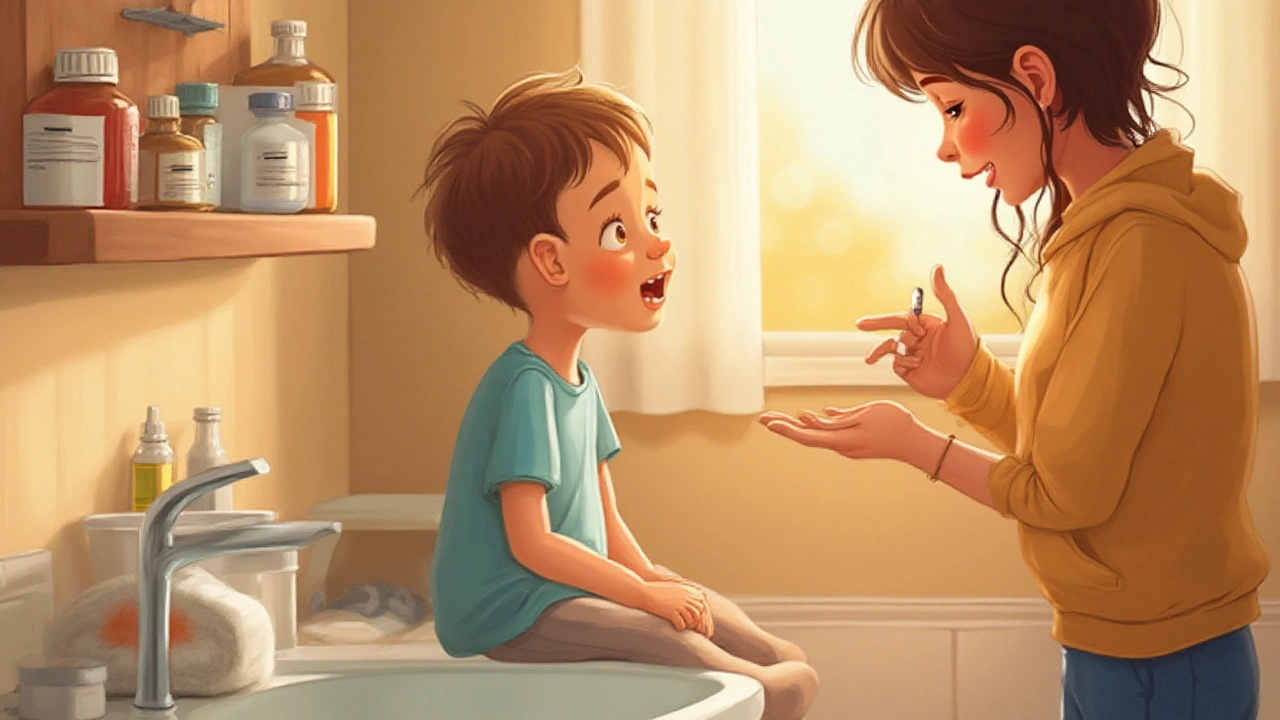How to Use Ear Drops: Step-by-Step Guide for Safe and Effective Relief
Ever tried using ear drops, only to end up with a mess, discomfort, or frustration? You're not alone—it can actually be trickier than it looks. Using ear drops right isn’t just about squeezing liquid into your ear. If you do it the wrong way, you might not get the relief you need, or worse, cause extra problems for your ear.
Start by washing your hands. Germs hanging out on your fingers can sneak into your ear and throw more bacteria into the mix. Next, make sure the bottle is at room temperature. Cold drops straight from the fridge often surprise with a not-so-pleasant chill or even dizziness, especially for kids.
Lie on your side or tilt your head so the affected ear faces the ceiling. Gently pull the earlobe: for adults, up and back; for kids under three, down and back. This little move helps open the ear canal for the medicine to reach its target. Squeeze the right number of drops into the ear. Don’t let the dropper tip touch your ear—if it does, rinse it before putting it back in the bottle.
Once the drops are in, keep your head tilted for at least 2–5 minutes. Seriously, set a timer if needed. The most common mistake people make is sitting up right away, leaving most of the medicine to drip right back out. Need to do both ears? Wait ten minutes before switching sides so each ear gets the full benefit.
If your doctor told you to plug your ear with a small cotton ball, go ahead—but don’t push it deep. Think of it as a gentle shield, not a plug for a barrel. Never use anything pointy to poke around in your ear—use only what your doctor or the product instructions suggest.
Pay attention to any stinging, swelling, or new pain. These aren’t just random quirks—they can be signs you’re having a problem with the medicine or an allergic reaction. Stop using the drops and call your doctor if anything feels off. No improvement after a few days of use? That’s a sign to get in touch with a health pro, even if you’re sure you’re doing everything right.
There’s a trick for folks who struggle with self-dosing: ask a friend or family member to help. Sometimes a second set of eyes can make the whole process smoother—and it’s safer, too. Kids and older adults especially tend to need a hand.
Keep ear drops tightly closed and away from heat and sunlight. Medicine breaks down quickly when left out in the open, so store the bottle as the label recommends and toss it if it’s expired.
For chronic ear problems, like wax build-up or ongoing infections, long-term use isn’t always the answer. Self-medicating too often could make things worse, so check in with your doctor before extending your course.
Learning to use ear drops the right way can save you time, pain, and the hassle of second-guessing. Every bottle comes with its own instructions, so always glance at the label before starting. Proper technique means your ears have a better shot at quick, safe healing—and you get back to feeling normal faster.

How to Use Ear Drops Safely for Ear Canal Infections: Step-by-Step Guide
Learn how to use ear drops for ear canal infections. Find essential steps, expert tips, and answers to common concerns in this practical guide.
view more